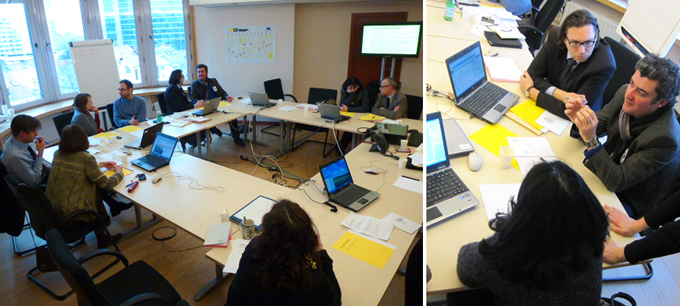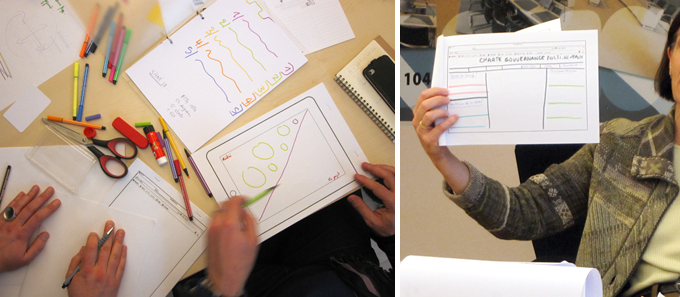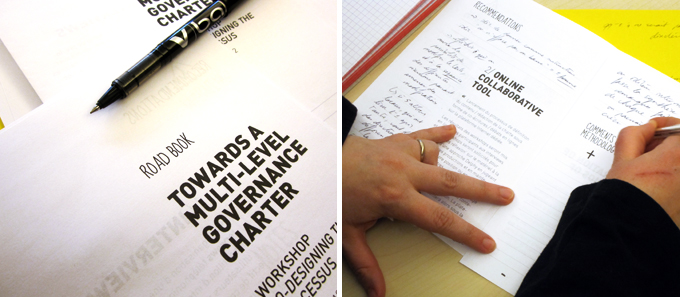Simulation of the collaborative process

A collaborative emulation process…
For the first meeting of the Steering Committee organised at the Committee of Regions (Brussels) the 3rd of February 2012, a half day workshop was organised to experiment and discuss a proposed process of co-construction of the Charter. The purpose of this emulation workshop was not to complete a 4 month study in 4 hours but to try the main processes and tools, to test what works and what works less. In turn, to get an idea of the results at each steps. Emulation is intended here both as simulation (members of the Steering Committee are not exactly representative of the stakeholders mentioned above but they know them enough to emulate their participation) and as stimulation (a Steering Committee is better enabled to steer, improve, enrich the proposed process if it has experimented it by itself).

Emerging issues from experimentation…
The nine participants of the Steering Committee plus Strategic Design Scenarios team worked together envisioning the situation of the use of the Charter through story-telling. They tested and discussed the blog tools where the story of the co-design process will be shared online over-time. The wiki tool has been set for an easy and converging co-writing process. They mocked-up possible form factors of the Charter and tested these in subgroups to discover whether their respective designs is explicit and efficient. Finally they explore and discuss creative way to support promotion, dissemination and implementation of the Charter.

What are the lessons learned from this exercise?
The story-telling process pictured people – citizens, civil servants, responsible of public institutions, etc – leveraging on a multilevel governance Charter (MLG) to fluidify collaboration between neighbour regions or to simplify administrative procedure for citizens (have a look at the written stories here >>>). But participants gave for granted that these people know that such a charter exists and that they are aware of its content, what is far from being the case. From designing a Charter, participants rapidly acknowledged that key points were to activate multilevel governance as an issue for people and institutions: to give visibility to it, to make its content accessible and attractive, to make sure that one can leverage on it to take action. The tentative mock-up of the Charter revealed the need for a multi-dimensional object: beyond the core text, appropriation of multilevel governance requires visual case-stories on a website, a panorama of short interviews depicting points of views; a label highlighting promising practices and showing their increasing number all other Europe; the very result of the story-telling exercise that showing a range of application of the Charter, suggests explicitly how to use it; examples that works as a demonstrator to show that multilevel governance works beyond how it works; also failed practices that teach as well as good practices or event better;
The process also allows collecting a whole range of interesting issues to be further investigated such as: how do you enable users of the charter to browse the values behind the synthetic text? How can we enlarge the focus from institutions and professionals to citizens and schools embedding these governance value in primary education? How can we make a vivid and evolving charter when by essence a charter is static?